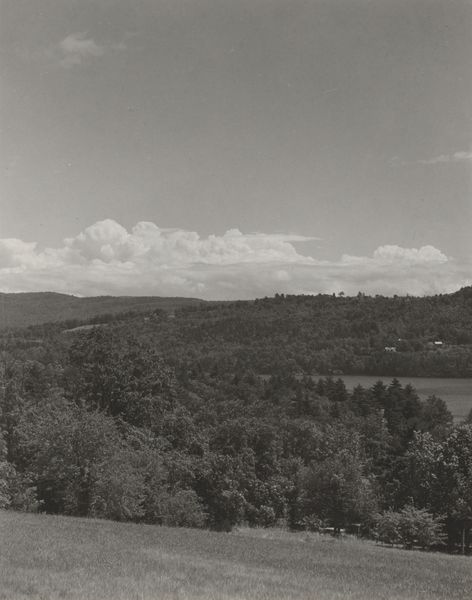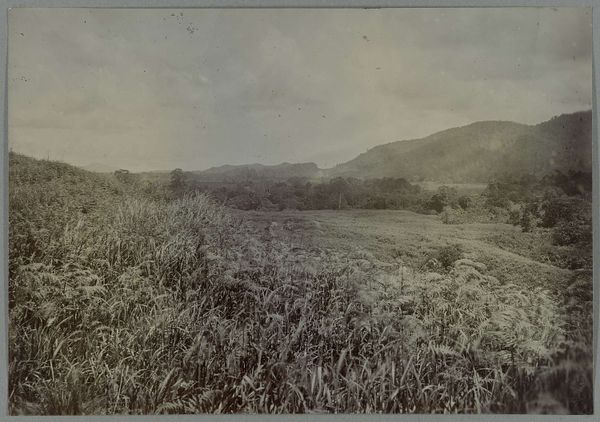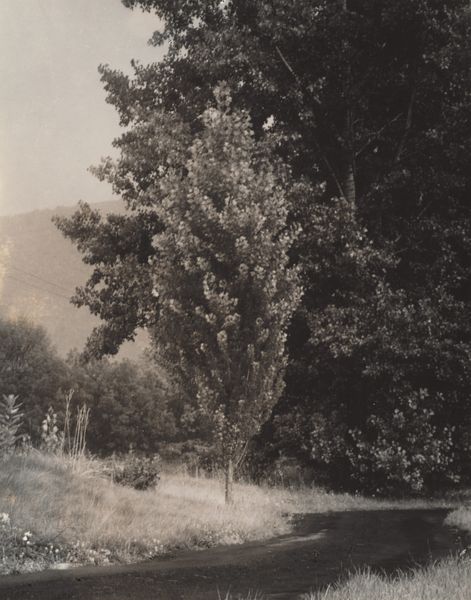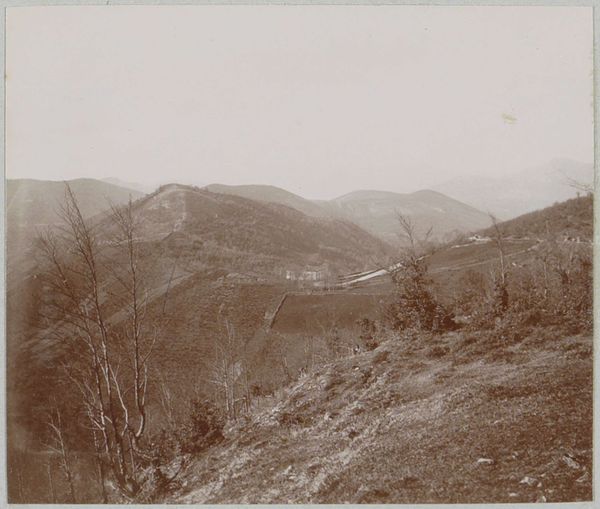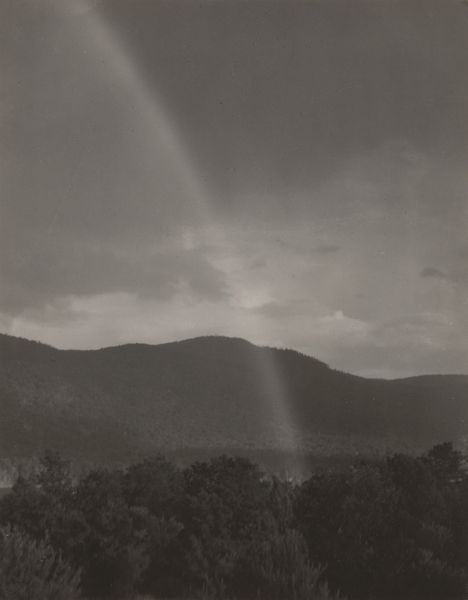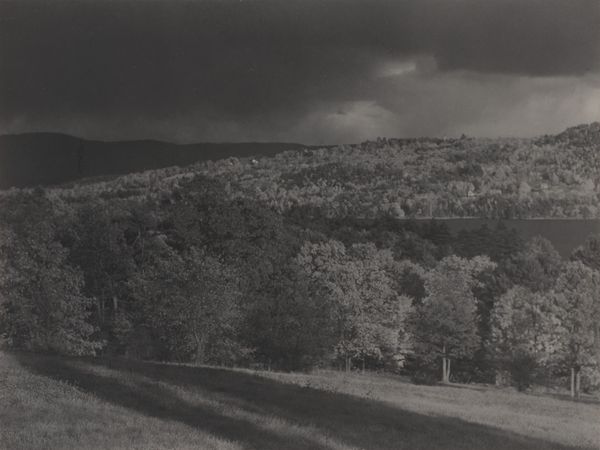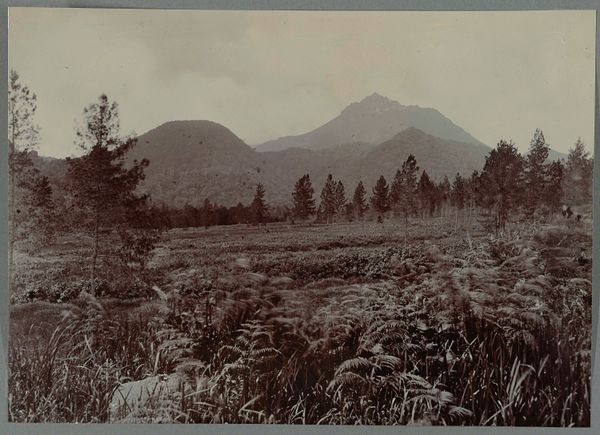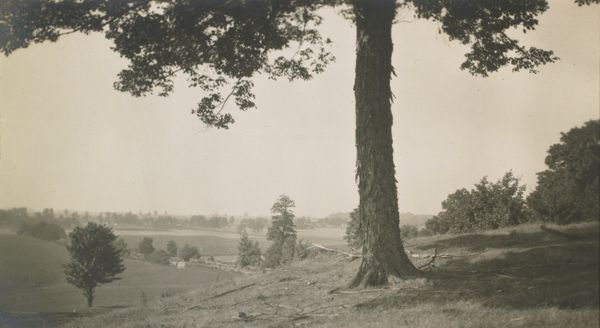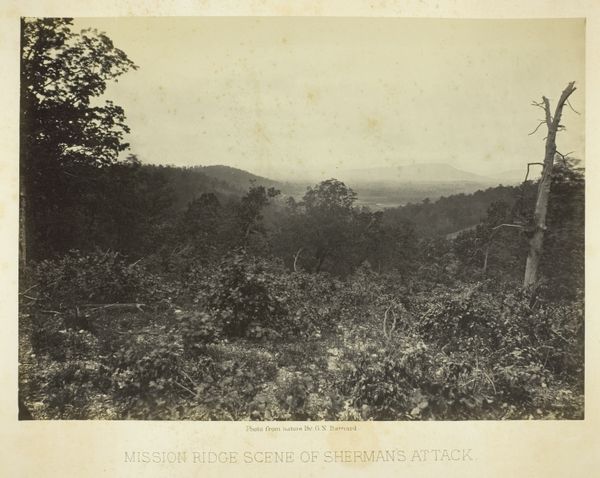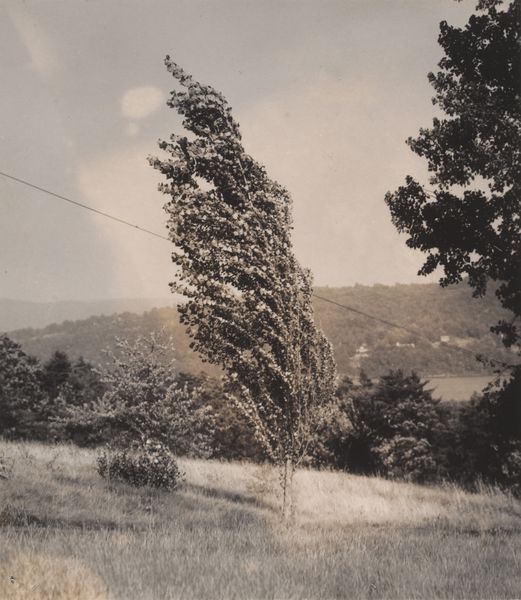
photography, gelatin-silver-print
#
black and white photography
#
pictorialism
#
landscape
#
photography
#
gelatin-silver-print
#
monochrome photography
#
monochrome
Dimensions: sheet (trimmed to image): 11.5 × 9.1 cm (4 1/2 × 3 9/16 in.) mount: 34.1 × 27.6 cm (13 7/16 × 10 7/8 in.)
Copyright: National Gallery of Art: CC0 1.0
Editor: This is Alfred Stieglitz's "The Maple Tree," from around 1926. It's a gelatin-silver print, and I'm immediately struck by its stillness. What do you see when you look at it? Curator: I see a complex interplay of material conditions and artistic labor. The very choice of a gelatin-silver print speaks volumes. Consider its historical context: photography in the early 20th century was rapidly evolving. Stieglitz’s commitment to this process signifies a dedication to a specific mode of production, one that bridges art and industry. How does this connect, for you, with Stieglitz's overall body of work? Editor: Well, I know he was a champion of photography as fine art... but are you suggesting there's a tension there? Between the artistic intention and the industrial process? Curator: Precisely! Think about the labor involved in producing a gelatin-silver print – the meticulous mixing of chemicals, the darkroom work, the printing process itself. It’s a far cry from simply pointing a camera and clicking a button. And let’s not forget the social context: Who had access to these materials and this technology? Who could afford to spend their time creating art in this way? Editor: So, the materials and the process themselves reflect power dynamics, not just artistic expression. The landscape, the trees, everything in this shot… is mediated by these concerns. Curator: Exactly! The “natural” world isn’t presented in a vacuum. Stieglitz is engaging in a specific form of consumption of these materials, and creating a commodity himself. Are we then able to consider whether, ultimately, that shapes its aesthetic value? Editor: That's a perspective I hadn't considered before. Thanks, that gives me a lot to think about in terms of the other photos in the show as well. Curator: My pleasure. Hopefully it encourages you to ask further questions on artistic labour and materials of all artworks moving forward.
Comments
No comments
Be the first to comment and join the conversation on the ultimate creative platform.


